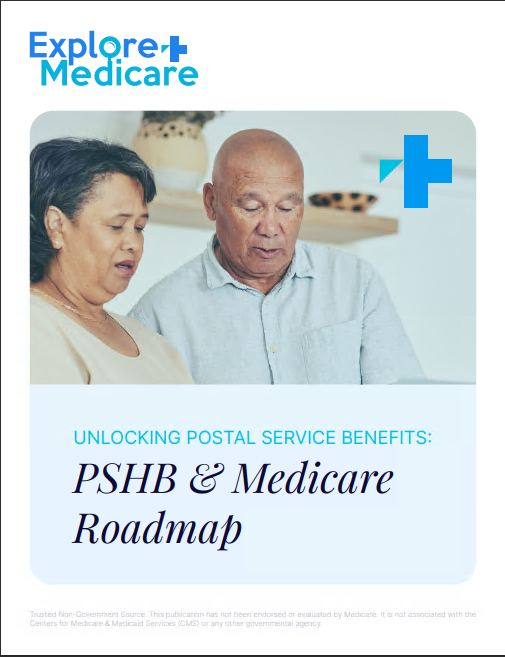Key Takeaways
-
Medicare Part B covers essential medical services, including doctor visits, outpatient care, and preventive screenings, but it comes with monthly premiums and out-of-pocket costs.
-
Understanding enrollment periods and potential late penalties is crucial to avoiding unnecessary expenses and gaps in coverage.
What Does Medicare Part B Cover?
Medicare Part B is your gateway to essential medical services. It covers a broad range of healthcare needs, including:
-
Doctor Visits: Routine check-ups and specialist appointments.
-
Preventive Services: Screenings for conditions like cancer and diabetes, vaccines, and annual wellness visits.
-
Outpatient Care: Services in clinics, outpatient centers, and hospital outpatient departments.
-
Durable Medical Equipment (DME): Items like wheelchairs, walkers, oxygen supplies, and prosthetics.
-
Emergency and Ambulance Services: If medically necessary and meeting Medicare guidelines.
However, Part B doesn’t cover everything. It generally does not include routine dental, vision, or hearing services. Medications that you pick up at a pharmacy are also not covered under Part B unless administered in a clinical setting, such as chemotherapy drugs. Long-term care, cosmetic procedures, and alternative medicine treatments typically fall outside of Part B coverage.
Understanding exactly what Medicare Part B covers will help you determine if you need additional coverage options to fill in the gaps.
How Much Does Medicare Part B Cost?
Medicare Part B is not free, and it’s important to understand the costs involved. The monthly premium for most beneficiaries in 2025 is $185, but this can be higher if you have a higher income and are subject to Income-Related Monthly Adjustment Amount (IRMAA).
Beyond the monthly premium, you’ll also encounter:
-
Annual Deductible: In 2025, the deductible is $257 before Medicare starts covering your services.
-
Coinsurance: Medicare typically covers 80% of the approved cost, and you are responsible for 20% out of pocket. There is no annual out-of-pocket maximum under Original Medicare, so your costs could add up significantly if you require frequent care.
-
Excess Charges: If your doctor does not accept Medicare assignment, they can charge you up to 15% more than the Medicare-approved amount for a service.
Unlike Medicare Part A, which is often premium-free for most beneficiaries, Part B requires ongoing monthly payments. Factoring these costs into your budget is essential when planning for healthcare in retirement.
When and How Should You Enroll?
Timing is everything when it comes to enrolling in Medicare Part B. If you don’t sign up when you first become eligible, you could face costly late enrollment penalties that last for as long as you have Medicare. Here are the key enrollment periods:
1. Initial Enrollment Period (IEP)
Your 7-month window begins three months before your 65th birthday, includes your birth month, and extends three months after. If you’re already receiving Social Security benefits, you’re automatically enrolled. Otherwise, you must sign up yourself.
2. Special Enrollment Period (SEP)
If you or your spouse are still working and covered by an employer health plan, you can delay Part B without penalty. Once you lose that coverage, you have 8 months to enroll in Part B without facing late fees. This can apply if you have coverage through a large employer (20+ employees).
3. General Enrollment Period (GEP)
Missed your IEP? You can enroll between January 1 and March 31, but your coverage won’t start until July 1—and you’ll likely pay a late penalty. The penalty increases your premium by 10% for every full 12-month period you were eligible but didn’t enroll. Since this penalty lasts for as long as you have Medicare, it can significantly increase your long-term costs.
If you have retiree coverage, COBRA, or Veterans Affairs (VA) benefits, you should carefully evaluate whether delaying Part B enrollment makes financial sense. Some of these options do not count as creditable coverage for delaying Medicare enrollment.
How Does Medicare Part B Work with Other Coverage?
If you have other health insurance, Medicare Part B can either be primary or secondary depending on your situation. Understanding this relationship is crucial so that you avoid unexpected medical expenses.
-
If you’re still working and have employer coverage: Your employer plan is usually primary, and Medicare is secondary. If you work for a company with fewer than 20 employees, Medicare may become primary.
-
If you have retiree or COBRA coverage: Medicare becomes primary, meaning you should enroll in Part B to avoid gaps in coverage. COBRA is not considered creditable coverage for delaying Part B enrollment.
-
If you have Medicaid: Medicare pays first, and Medicaid may help cover some of your remaining costs. Medicaid can help with Part B premiums, deductibles, and coinsurance.
-
If you have TRICARE (military health coverage): Medicare is usually primary, but you must enroll in Part B to maintain full TRICARE benefits.
Making sure you have the right combination of coverage is crucial to keeping costs manageable. If you’re uncertain, speaking with a licensed agent can help you navigate these complexities.
Making the Right Choice for Your Healthcare
Medicare Part B plays a critical role in covering your medical needs, but it comes with costs and specific enrollment rules that you need to be aware of. Knowing what’s covered, when to enroll, and how to manage out-of-pocket expenses will help you make the best decision for your healthcare.
If you’re still working, coordinate with your employer’s benefits department to understand how Medicare interacts with your current coverage. If you are already retired or planning to retire soon, enrolling on time is essential to avoid penalties and gaps in coverage.
For those with complex healthcare needs or multiple coverage options, getting in touch with a licensed agent listed on this website can help you make informed decisions and avoid costly mistakes. An agent can guide you through your choices and ensure that you have the coverage that best suits your situation.









